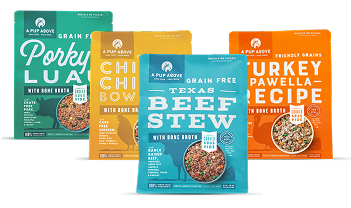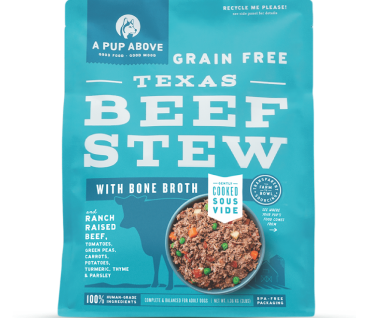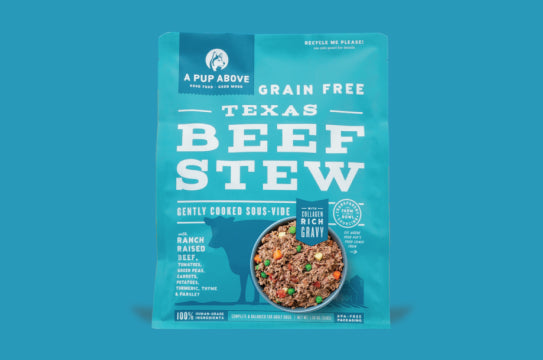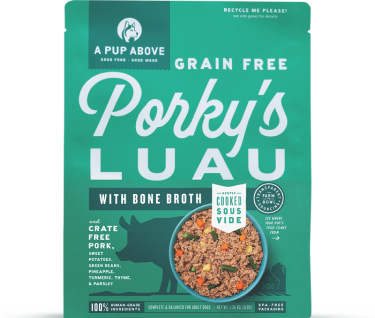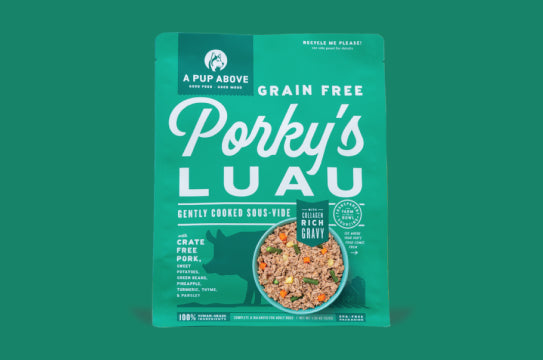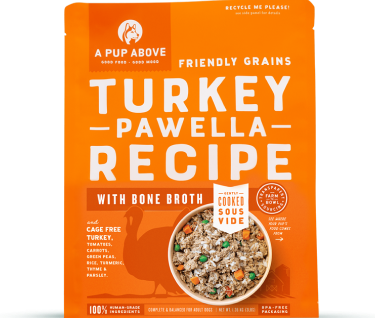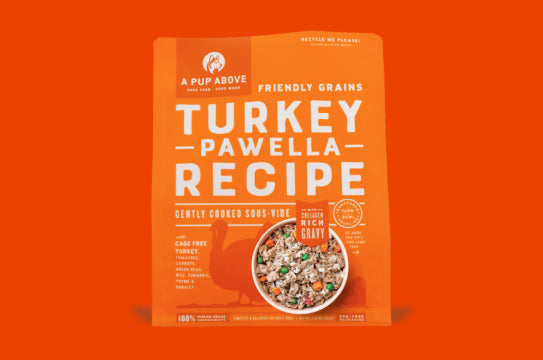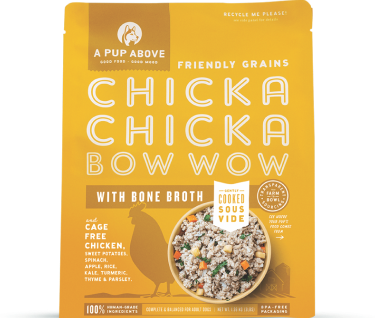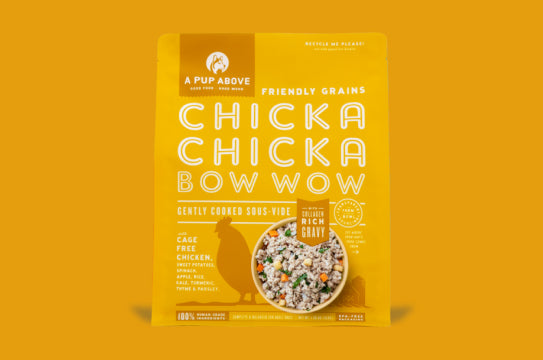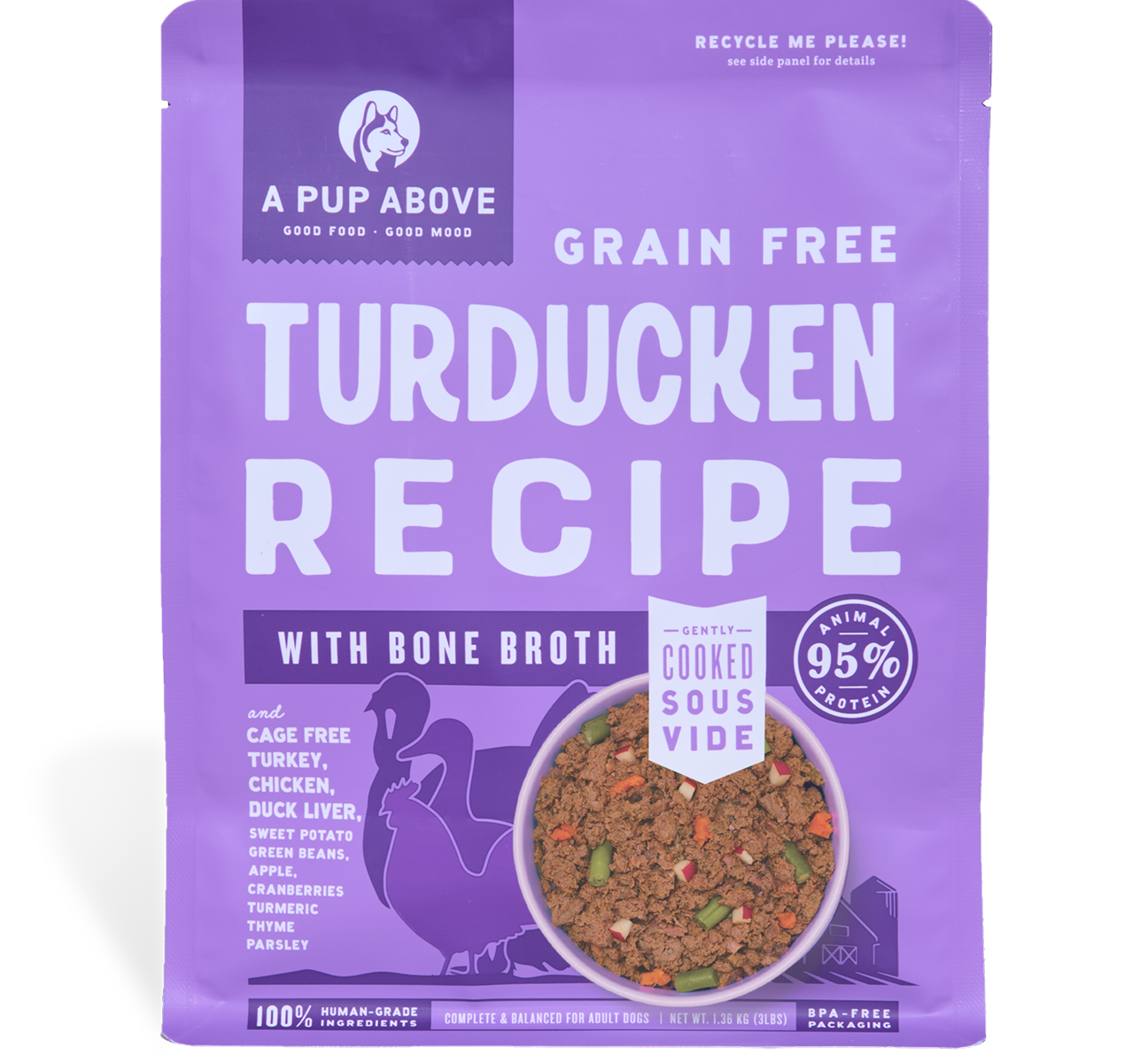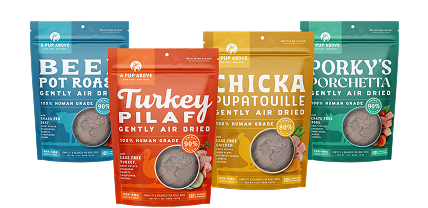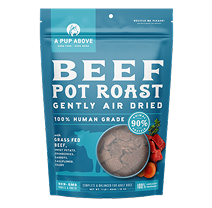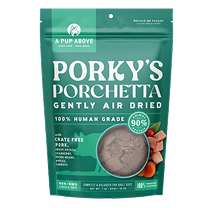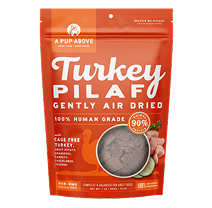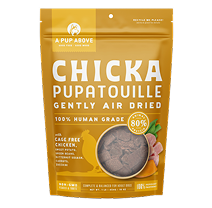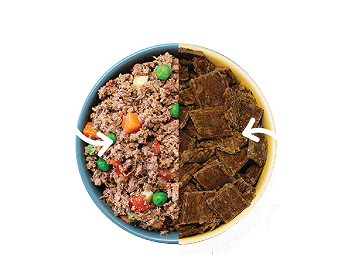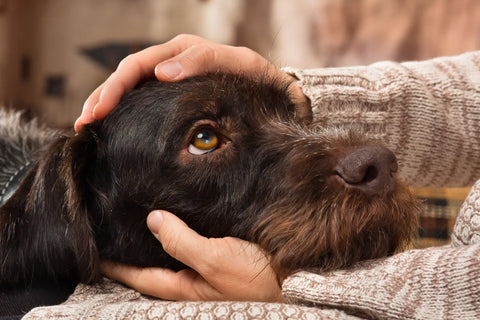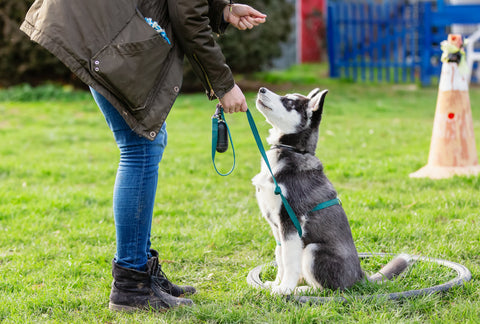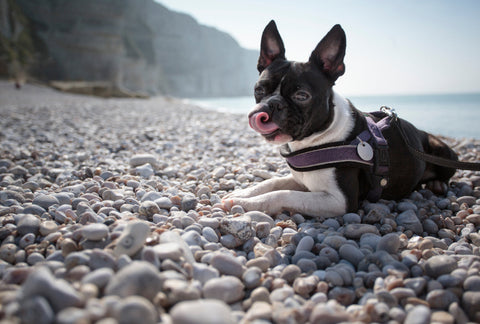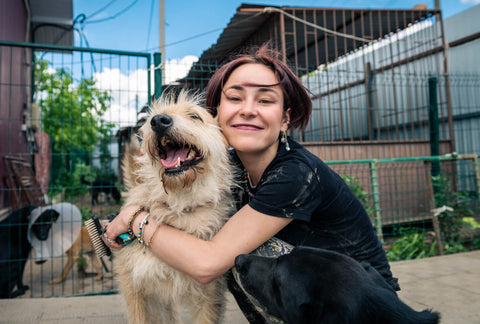
Westie: A Guide to West Highland Terriers Care
Table of Contents
- Where Did Westies Come From?
- What Do Westies Look Like?
- Westie Temperament and Behavior
- How Do I Care for My Westie?
- How Much Exercise Does My Westie Need?
- What Do I Feed My Westie?
- Westie Feeding Chart
- How Do I Groom My Westie?
- Training and Socialization
- Breed Clubs and Resources
- Embrace the Warmth and Loyalty of Your Westie
The West Highland White Terrier, affectionately known as the Westie, is a remarkable breed of dog that hails from the rugged landscapes of Scotland. At A Pup Above, we understand the importance of providing detailed information to ensure the well-being of whichever breed you decide to bring into your family.
In this guide, we'll embark on a journey through the world of Westies, exploring their rich history, unique physical characteristics, and delightful temperament. Whether you're a seasoned dog owner or considering bringing a Westie into your life, this comprehensive guide will provide valuable insights into their care and companionship.
Where Did Westies Come From?
The West Highland White Terrier, known for its iconic snowy-white coat, traces its roots back to the misty Scottish Highlands. This breed's history is steeped in the role of a dedicated earthdog, bred to rid the Scottish countryside of vermin. Their history intertwines with Scottish royalty, as King James I and Malcolm, a Scottish king, played pivotal roles in their development.
In their early days, Westies were recognized as the Roseneath Terrier and the Poltalloch Terrier, named after the estates of breed enthusiasts. Over time, they earned their place as a beloved Scottish breed, cherished for their tenacity and loyalty.
What Do Westies Look Like?
The Westie's physical appearance is as distinctive as its Scottish heritage. These small dogs sport a double coat with a soft undercoat and a weather-resistant outer coat.
Their most prominent feature is their glistening white coat, which exudes charm and elegance. White is the most common coat color, but Westies can occasionally have wheaten or brindle markings.
Despite their compact size, Westies possess a deep chest, conveying strength and agility. Their erect ears and sparkling, almond-shaped eyes give them a lively and intelligent expression. The overall impression is one of a well-proportioned, robust, and spirited little dog.
Westie Temperament and Behavior
When it comes to temperament and behavior, Westies are renowned for their personalities. Westies are brimming with energy and loyalty, making them ideal family pets. Their friendly and approachable nature ensures they integrate seamlessly into family life.
As watchdogs, Westies excel in alerting their owners to any potential intruders with their sharp barking. Their prey drive, inherited from their vermin-hunting days, means they can be enthusiastic in pursuit of small creatures during playtime.
These playful, intelligent dogs thrive on interactive play and mental stimulation. Keeping them engaged and providing daily walks will ensure they remain happy and healthy companions. Westies also enjoy participating in dog sports and even making appearances at prestigious dog shows like Crufts.
How Do I Care for My Westie?
At A Pup Above, we prioritize the health and well-being of your beloved Westie. Like all breeds, West Highland White Terriers can be susceptible to certain health problems, and it's essential to be informed.
One condition to be aware of is Perthes disease, a hip joint issue that can affect this breed. To ensure your Westie's health, it's crucial to acquire your pup from a reputable breeder who conducts health screenings and genetic testing.
Understanding the average lifespan of Westies, which typically ranges from 12 to 16 years, is essential for planning their care and companionship throughout their lives. Regular veterinary check-ups and a balanced diet play a crucial role in maintaining their health.
How Much Exercise Does My Westie Need?
Maintaining your Westie's health goes hand in paw with fulfilling their activity and exercise needs. These spirited dogs thrive on daily walks, interactive playtime, and mental stimulation. It’s essential to provide these energetic little dogs with the physical and mental outlets they crave.
Westies excel in various dog sports, showcasing their agility and intelligence. Engaging them in activities like fetch, puzzle toys, and obedience training helps them burn off energy and strengthens the bond between you and your pup. Whether it's a walk in the park or fetch in the yard, meeting their exercise requirements is key to a happy and healthy Westie.
What Do I Feed My Westie?
When it comes to providing a well-balanced and nutritious diet for your West Highland Terrier, it's crucial to ensure their overall health and well-being. A top priority is to offer them a high-quality diet that meets their specific dietary needs.
Consider opting for A Pup Above dog food, which is specially crafted to cater to picky pups like West Highland Terriers. Our sous vide cooking technique involves the slow cooking of food in vacuum-sealed bags at lower temperatures.
Taking it a step further, we incorporate bone broth during the cooking process, enhancing both the taste and nutritional content of the meals. The inclusion of bone broth also provides added hydrating support for your West Highland Terrier's joint health.
Even for selective eaters such as West Highland Terriers, A Pup Above offers a delightful meal experience. The combination of sous vide cooking and the incorporation of bone broth ensures that every bite is appetizing and enjoyable for your pup.
Remember to consult with your veterinarian to determine the appropriate feeding routine and portion sizes for your furry friend's specific needs.
Westie Feeding Chart
Now you know how important a dog’s diet is for your Westie's health, but how much should you feed them? At what age does that change? And what’s the scoop on treats?
Here's a detailed breakdown, keeping all their dietary needs in mind.
Feeding Guide by Life Stage:
- Puppies (under 1 year): Those energetic little bodies need a diet that supports their growth. Feed them high-quality puppy food that’s rich in essential vitamins and antioxidants, DHA for brain development, and omega-3 fatty acids to promote a shiny coat and healthy skin.
Amount of Food: Generally, your adorable Westie puppy will need about ¼ to ½ cup of food per meal, served three to four times a day, depending on your dog’s weight and activity level.
Snack Time: Puppies love little rewards! For healthy treat ideas, peek at our blog on What Vegetables are Good for Dogs?
- Adult Westies (1-8 years): As they mature, transition your Westie to adult dog food that suits their energy requirements and helps maintain a healthy weight. This food should be high in quality protein and free from unnecessary fillers or preservatives.
How Much To Feed: An adult Westie typically does well on about ½ to 1 cup of food per day, split into two meals. Adjust the portion size based on their dog's age, nutritional needs, and body condition.
Tasty Extras: Keep mealtime exciting with a variety of high-quality dry kibble, fresh food, or wet food, and don't forget to add a sprinkle of fish oil supplements for those omega-3 fatty acids that support their lush coat.
- Seniors (over 8 years): Older Westies need tailored nutrition to manage their body weight and maintain muscle mass. Look for quality food that supports weight management and includes glucosamine and chondroitin to help with joint health.
Feeding Amounts: Reduce portions slightly to prevent obesity as their activity level decreases. Soft, wet food or well-cooked brown rice in a Westie diet can help those with sensitive teeth.
How Do I Groom My Westie?
Maintaining the pristine appearance of your Westie's iconic white coat is a vital aspect of their care. Regular brushing, bathing, and occasional trimming are essential to prevent matting and maintain their outer coat and soft undercoat.
While their white coat can be breathtaking, it requires special care to keep it in top condition. Yellowing around their eyes and mouth is common, so seek out groomers adept at caring for their specific coat.
Training and Socialization
At A Pup Above, we believe in fostering positive relationships with our furry friends through training and socialization. Westies are known for their intelligence and can be trained effectively with the right approach. Early socialization is essential to ensure your Westie becomes a well-rounded and confident companion.
Understanding their strong prey drive, we'll provide insights into managing this trait through positive reinforcement training techniques. Building a strong bond based on trust and communication is at the heart of training.
Breed Clubs and Resources
To support you in your Westie journey, A Pup Above encourages you to explore breed clubs and resources. Specifically, you want to focus on those dedicated to West Highland White Terriers.
Organizations like the West Highland White Terrier Club of America and the Kennel Club in the UK provide valuable information, breed standards, and connections to reputable breeders. These resources can help you find a healthy, well-bred Westie who will be a cherished member of your family for years to come.
Additionally, we understand the importance of connecting with other Westie enthusiasts and experienced owners who can offer guidance and support. Joining breed-specific forums and communities can be a rewarding way to share experiences and gain insights into caring for your Westie.
Embrace the Warmth and Loyalty of Your Westie
In conclusion, the West Highland White Terrier, or Westie, embodies the spirit of Scotland with its unique history, distinctive physical characteristics, and delightful temperament. A Pup Above has taken you on a journey through the world of Westies, providing a comprehensive guide to their care.
Remember, the key to a happy and healthy Westie lies in understanding their needs, whether it's their exercise requirements, grooming routines, or training methods. These small but spirited dogs thrive in loving, knowledgeable homes that prioritize their well-being.
Sources:
Scottish Highlands Travel Guide | U.S. News and World Report
Washington is full of rats. These dogs are happy to help with that | Washington Post
Current perspectives on attachment and bonding in the dog–human dyad - National Library of Medicine
Top Stories

Why Do Dogs Lick Their Paws?

Why Do Dogs Whimper & Make Noises in Their Sleep?

Healthy Vet-Approved Homemade Dog Food Recipes

How To Cook Sweet Potatoes for Dogs


